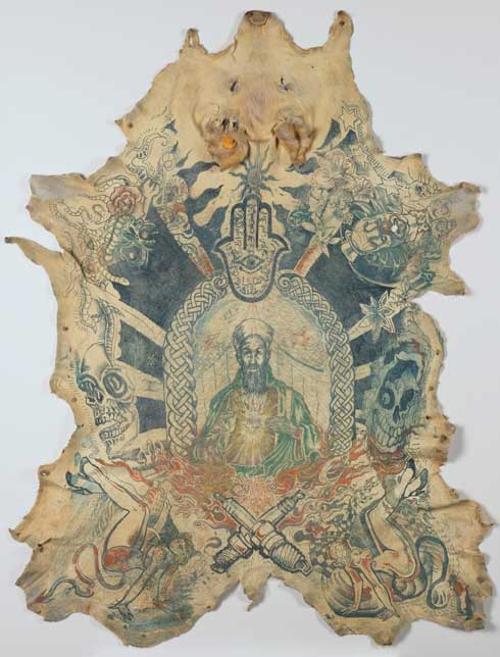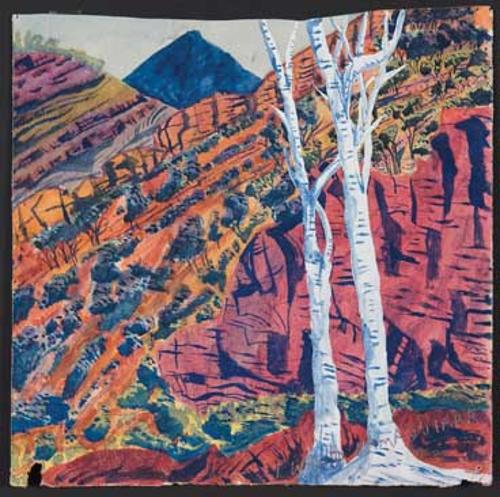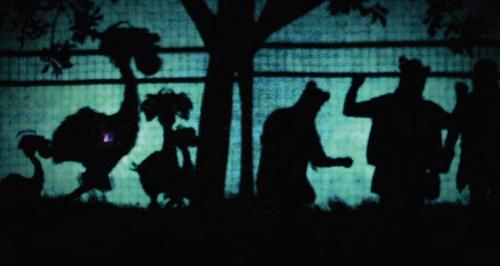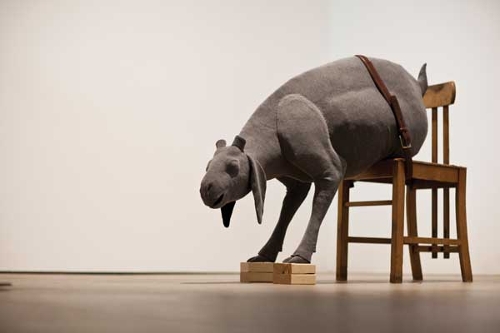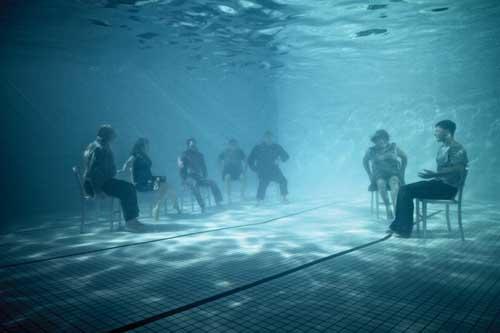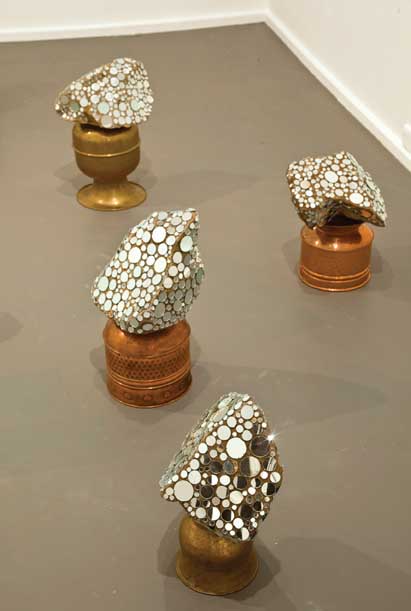
Words have long been a crucial material component in the art practice of Louise Haselton. One memorable past work for example fabricated the word wrest in three dimensions from a chequered blanket while moor room was an anagrammatic pair on small rectangular cardboard boxes. The gap between the printed words made them somehow reach toward/away from the other place literally and imaginatively.
The title of Haselton's recent solo exhibition at the Contemporary Art Centre of South Australia Errand Workshop relates both to the tasks involved in everyday practices and the place in which those working processes are organised and undertaken. Both words in the title suggest activity. The sculptures to which these titles allude are displayed as you would expect; on plinths, on a shelf, a table, on the floor or hanging from the ceiling and they are mostly upright and still. Things are not as straightforward as they seem however. The Good Millionaire is supported by a plinth covered with the same mirrored Perspex that is a material element in the sculptures amongst the Veto Group and Scrutineers have inverted brass and copper pots that support rocks covered with small mirror discs. The discs reflect fractured images from multiple aspects below. Sculpture and support in these examples defy neat categorisation.
Several works also confound the sense of supported weight in relation to apparent mass creating a tense fragility through inverting the physics of things. In Greek Chorus a large polished rock is held up by what looks like a double arched polystyrene shape which in turn is supported from below by layers of wool wrapped around an amorphously-shaped base. Materials listed in the gallery plan reveal the faux polystyrene as painted aluminum. Similarly The New World works aluminum and paint to simulate green sapling branches gathered into large linking hoops in a short chain. Many of the works enlist an association with handiwork from other human cultures either through materials such as the mirror discs, woven fabric and brass and copper pots that bring to mind an Indian or Arabic influence or through titles such as Greek Chorus and The New World.
Sometimes material sleight of hand is replaced by another address to (value) systems of things and their physical force. Works such as Invigilators, Scrutineers and Greek Chorus strongly attest to Haselton’s focus on witnessing unusual relations between things and implicates the viewer in revamped systems of material values. Shells, pods, corals and other sea-worn and sun-bleached detritus are seamlessly assembled and layered with everyday disposable human fabrications including plastic and polystyrene and are thus determinedly brought into complicitous relations. Several of these assemblages also reference symmetrical forms in nature and underscore the reflective qualities of many of the materials.
Climate change issues may have recently shifted some views of human beings as transcendent overlords unbeholden to their environment so that making special reference to combinations of natural and human-fabricated material elements in the work may seem anachronistic. However this prominent aspect of the exhibition that works to confound distinctions between natural and human-made is just one of several other categories at risk in Errand Workshop. Perhaps the 'errand’ is the passage between such distinctions.
The Pain Catchers is a most captivating example of work that addresses the viewer and the material issues at play in the exhibition. Symmetrical steel handles flank the archway from the rear gallery as if to support the negotiation of the passageway ahead. The handles are wound around and around with coloured wool creating large bulbous shapes. The imagined or virtual action of winding the wool reads as a meditative or votive action and implicates the past in the present into the future. The action one could say, works the logic of physical processes into the chaotic flux of life forces thus employing the inanimate to extend into the world.
Errand Workshop is a materially rich and compelling exhibition of works that evidences a fulsome reckoning with its potential for generative action in the world. It is in a sense an animation in the ways in which it considers our relation to seemingly inert things extending our "reach" into our environment. Artist and writer from the 1960s Robert Smithson termed the “time of the artist” as the time for contemplative processes and the accrued understanding of the work built from a life invested in artistic practice. Clearly Haselton’s insightful material accomplishments in this exhibition have been achieved through the very same ongoing errand.

